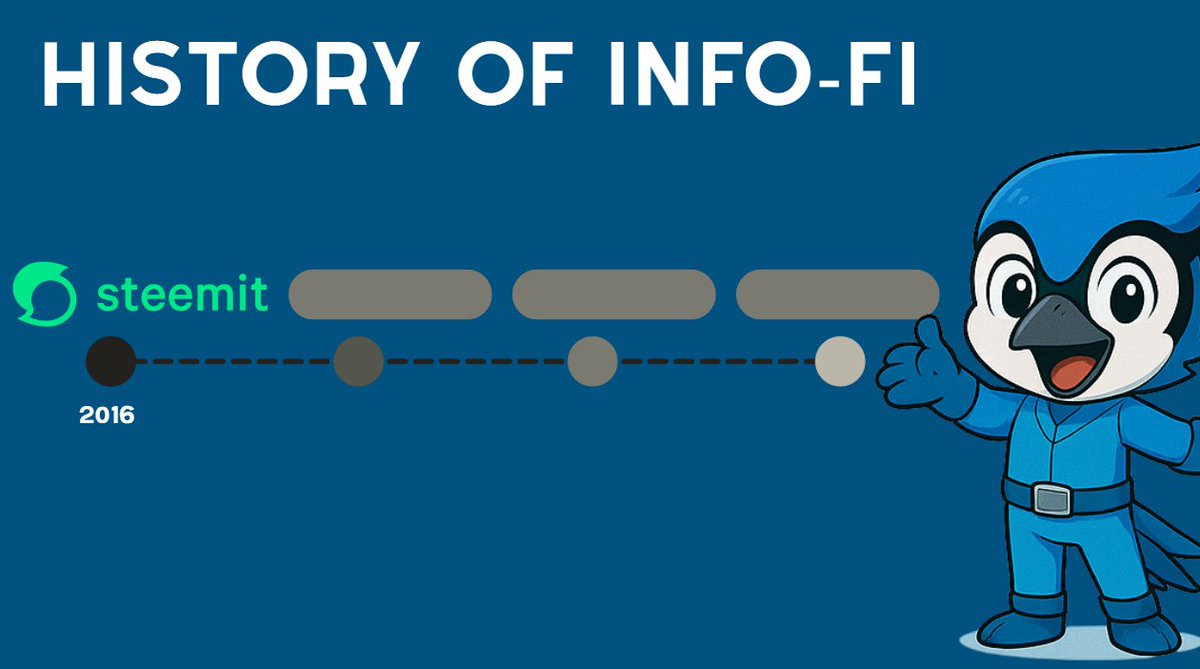[GUEST ACCESS MODE: Data is scrambled or limited to provide examples. Make requests using your API key to unlock full data. Check https://lunarcrush.ai/auth for authentication information.]  jayplayco [@jayplayco](/creator/twitter/jayplayco) on x 7293 followers Created: 2025-07-09 09:39:11 UTC The first version of a @KaitoAI was already X years ago? Going somehow a bit into history lessons and as Info-Fi and Social-fi is getting hot, we will have a look into the old days of Social-fi. Social-Fi has been around longer than you might think. The first Social-Fi Layer X started already in March 2016 (9 years) ago. It was called Steem and founded and developed by Dan Larimer who left the project and later co-founded EOS (highest ICO ever) Steem was at that time already innovative, as it was using accounts with readable names, asked for money to create an account, already had from the beginning DPOS (delegated proof of stake) and Write to Earn implemented. People could buy Steem and stake it to get voting power (similar to staked governance tokens and voting rights) to vote posts from other creators. Based on the staked amount you could vote and get XX% of the voted amount back as APR after X days. But staking came at a cost, as it would take you XX weeks to unstake your tokens. In 2016-17 most longform crypto content was published on Steem and created a ton of community created offline events around the world. It was a trend to finance your offline meetups while posting about them and paying with the rewards from that posting. Steem started to loose attention and got in trouble after the core developer Dan Larimer stepped down and created EOS. At the end the left over co-founder decided to sell the foundation to @justinsuntron in 2020, which ended up in a hefty and controversial community dispute. This led to a fork of a bigger portion of the community to the Hive Chain. Both Steem and Hive are still traded on major exchanges, and also the products are still used, but only serving a niche customer base. The main reason why this concept was not succesful is as followed. - Having voting power meant that circle jerking and whale power created an environment that people created at the end content that whales might like. - Bots and low effort content with voting circles Steem is now fulfilling a niche where the foundation is controlling a bigger portion of how the rewards are distributed. Means a more curated way of content creation and reward distribution. Unfortunately both Steem and Hive have not been able to reclaim the SEO rank for being the main source of long form Crypto content after 2020.  XXX engagements  **Related Topics** [coins layer 1](/topic/coins-layer-1) [coins socialfi](/topic/coins-socialfi) [kaitoai](/topic/kaitoai) [Post Link](https://x.com/jayplayco/status/1942881206095454254)
[GUEST ACCESS MODE: Data is scrambled or limited to provide examples. Make requests using your API key to unlock full data. Check https://lunarcrush.ai/auth for authentication information.]
 jayplayco @jayplayco on x 7293 followers
Created: 2025-07-09 09:39:11 UTC
jayplayco @jayplayco on x 7293 followers
Created: 2025-07-09 09:39:11 UTC
The first version of a @KaitoAI was already X years ago?
Going somehow a bit into history lessons and as Info-Fi and Social-fi is getting hot, we will have a look into the old days of Social-fi.
Social-Fi has been around longer than you might think. The first Social-Fi Layer X started already in March 2016 (9 years) ago. It was called Steem and founded and developed by Dan Larimer who left the project and later co-founded EOS (highest ICO ever)
Steem was at that time already innovative, as it was using accounts with readable names, asked for money to create an account, already had from the beginning DPOS (delegated proof of stake) and Write to Earn implemented. People could buy Steem and stake it to get voting power (similar to staked governance tokens and voting rights) to vote posts from other creators. Based on the staked amount you could vote and get XX% of the voted amount back as APR after X days. But staking came at a cost, as it would take you XX weeks to unstake your tokens.
In 2016-17 most longform crypto content was published on Steem and created a ton of community created offline events around the world. It was a trend to finance your offline meetups while posting about them and paying with the rewards from that posting.
Steem started to loose attention and got in trouble after the core developer Dan Larimer stepped down and created EOS. At the end the left over co-founder decided to sell the foundation to @justinsuntron in 2020, which ended up in a hefty and controversial community dispute. This led to a fork of a bigger portion of the community to the Hive Chain.
Both Steem and Hive are still traded on major exchanges, and also the products are still used, but only serving a niche customer base.
The main reason why this concept was not succesful is as followed.
- Having voting power meant that circle jerking and whale power created an environment that people created at the end content that whales might like.
- Bots and low effort content with voting circles
Steem is now fulfilling a niche where the foundation is controlling a bigger portion of how the rewards are distributed. Means a more curated way of content creation and reward distribution. Unfortunately both Steem and Hive have not been able to reclaim the SEO rank for being the main source of long form Crypto content after 2020.

XXX engagements
Related Topics coins layer 1 coins socialfi kaitoai